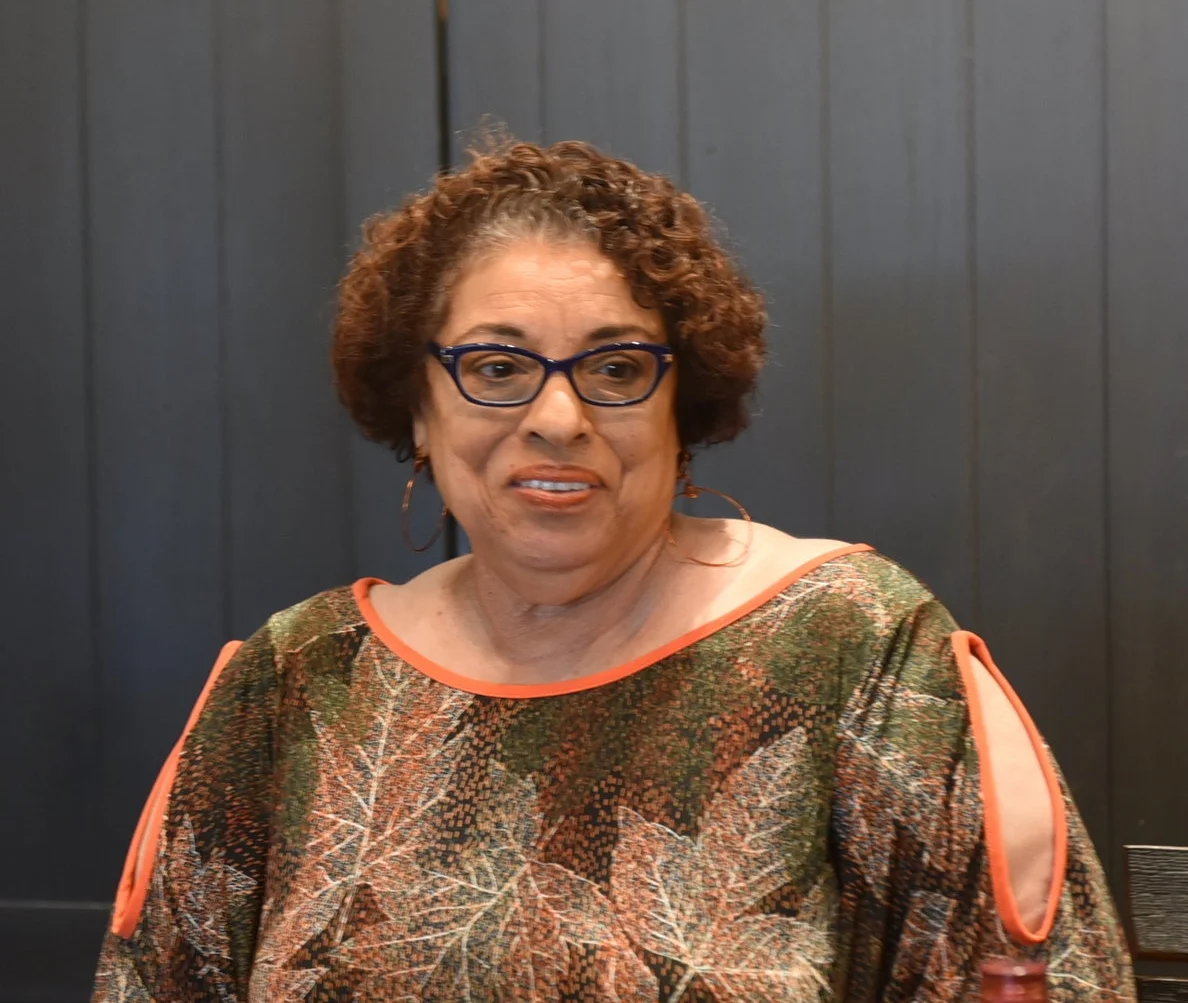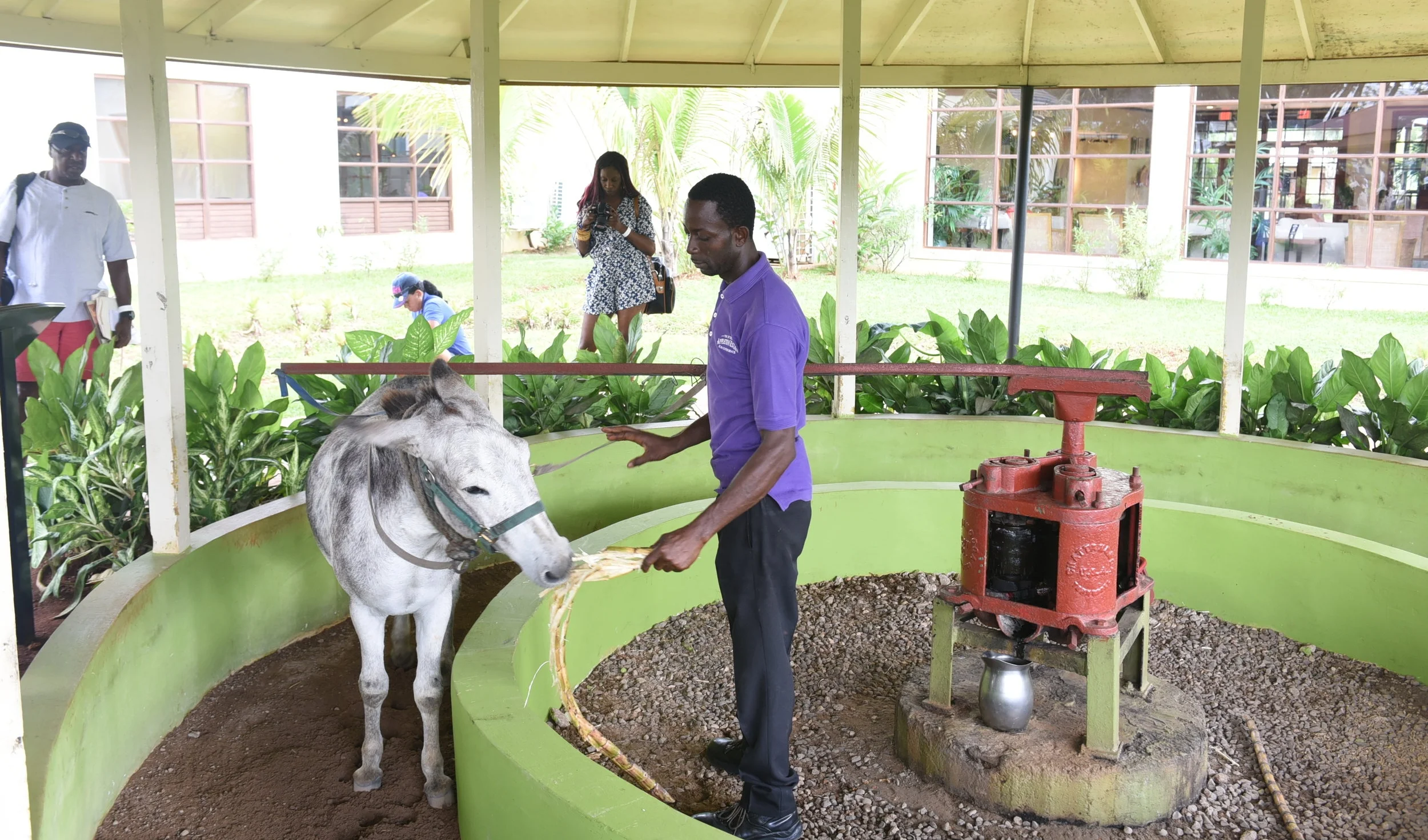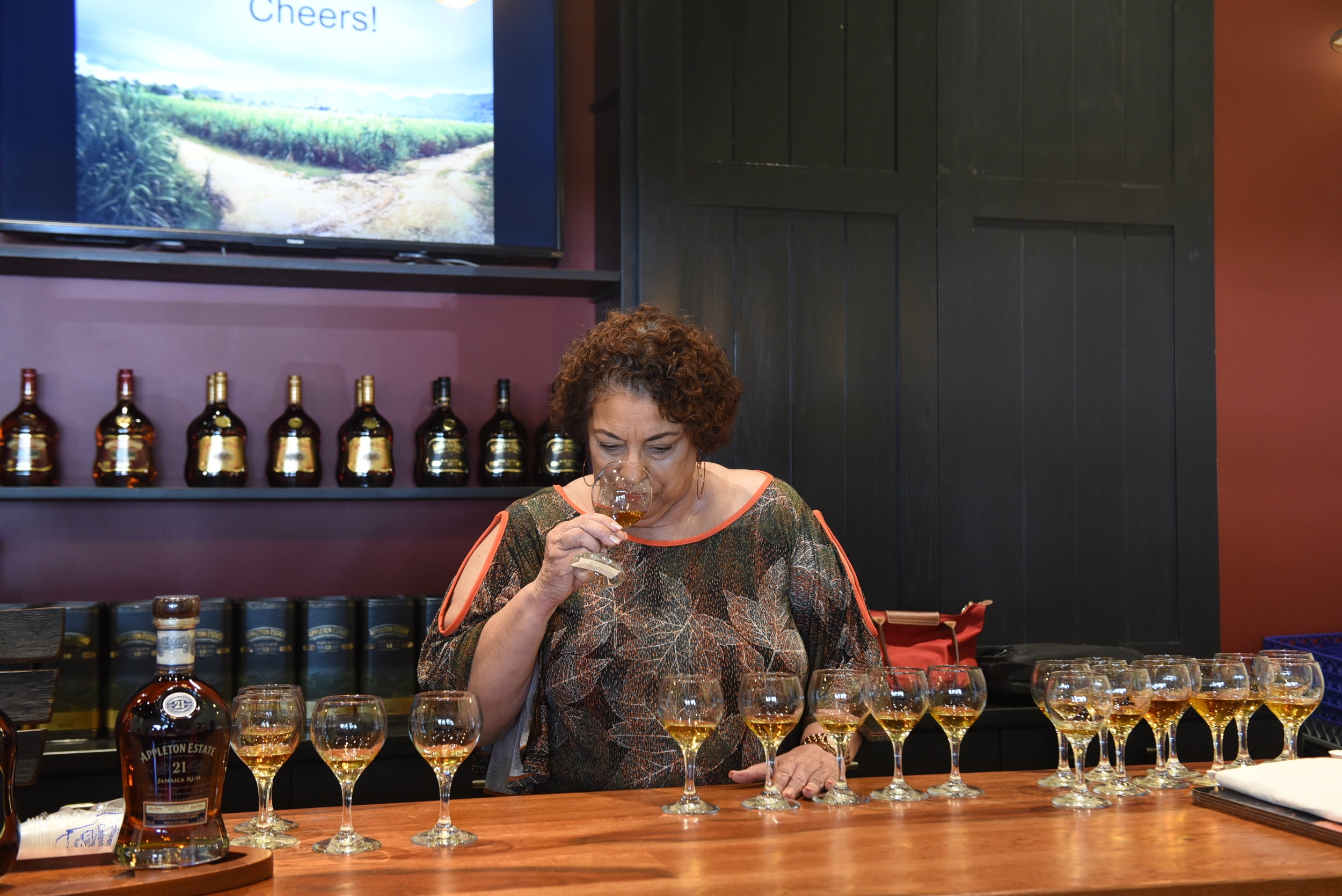Joy Spence's master class highlights Appleton Estate Rum Experience
September, 18, 2018
Count yourself very lucky if you have experienced a Joy Spence master class in the science of rum-making.
Extremely busy, the world’s first female master blender spends a significant chunk of her time on the road as an ambassador for Jamaica’s Appleton Estate finest rums.
The almost two-and-a-half hour drive on winding road from Montego Bay to the south coast estate nestled in the lush Nassau Valley in the island’s famed Cockpit Country may seem long and tedious.
Paz, the donkey, grinds sugar cane for visitors (Photo by Ron Fanfair)
But it’s worth it, particularly if you get to meet Spence in the classroom.
For nearly an hour, a group of North American-based journalists of Caribbean heritage learn about the process for making Appleton rum, taste the various expressions and are given an opportunity to create their own blend before embarking on the Joy Spence Appleton Estate Rum Experience (JSAERE) formerly known as the Appleton Estate Rum Tour.
Since 1749, Appleton has been creating authentic and premium rums using time-honoured traditions that have been passed down through generations.
Appleton has been up and running since 1749 (Photo by Ron Fanfair)
The various rum brands are estate-distilled using a proprietary yeast strain propagated from the sugar cane grown on the 11,000-acre estate and produced through the painstaking combination of small batch copper and column distillation.
“We own our sugar estates,” Spence, who will be honoured with a vice-chancellor’s award at the 10th annual University of the West Indies (UWI) Toronto gala fundraiser on April 6, 2019 at the Ritz Carlton in Toronto, proudly noted. “Not many rum producers can say this as most of them actually start by purchasing molasses from suppliers around the world.”
A total of 10 tons of sugar cane produce 360 bottles of rum.
Once distilled, the rum is shipped by tankers to Kingston, Jamaica’s capital, for ageing, blending and bottling.
The ageing is done in number one selected once-used bourbon barrels that are made of white American oak.
Tour guide Kayon Wright stands next to oak barrels (Photo by Ron Fanfair)
“The reason we use that oak is because of it’s low tannins (they have an impact on the organoleptic qualities of rum, adding to its balance, structure and roundness) and rich vanilla notes production,” said Spence. “Once rum is put into the oak barrels, a chemical transformation takes place and, over time, you now develop vanilla, cocoa, coffee, hazelnut and almond notes. You also get a nice golden colour from the oak.”
High temperatures during the day and cool temperatures at night allow the rum to expand and contract in and out of the oak barrels.
Flavours are created naturally during the ageing process that can last from three to 30 years.
Jamaican law requires that each of the rums that enter a bottle must have been aged in oak barrels for at least the number of years stated on the label.
“Once you see a number on our label, let’s say 12 in this case, it means the youngest rum in this blend had to sit in the barrel for a minimum 12 years before we could bottle it,” she pointed out. “You could have rums older than 12 years, but the youngest one is what’s declared as the age. Then you have an average age system where the producer still puts a number on their label, but it represents an average of older and younger rums.”
Spence’s passion for chemistry emerged at Holy Childhood High School when she turned 13.
Joy Spence samples the journalists’ blends (Photo by Ron Fanfair)
“My chemistry teacher had an amazing influence on me and I spent many afternoons with her preparing lab work for the upper school,” she recalled.
After the teacher’s sudden death while Spence was in fourth form, the student made a pledge to honour her.
“I vowed I would become the best chemist there could be,” she said.
With a Bachelor of Science degree (first-class honours) from UWI and a Master’s in analytical chemistry from the University of Loughborough in England with a record final exams score that still stands, Spence joined the University of Technology as a chemistry lecturer.
“I decided I wanted to get some manufacturing experience, so I went to Estate Industries Ltd. (they produced Tia Maria liqueur) where I spent two years as a research chemist,” she said.
Spence, who played a major role in Jamaica’s fight for geographical indication approval for its rum, joined Appleton –Jamaica’s oldest continuously-run sugar estate and distillery -- in 1981.
“That’s where I fell in love with rum and developed a passion for it,” the wife of Jamaican National Money Services manager Emile Spence and mother of two children said. “I gained an understanding of how complex and beautiful spirit rum is and that it can be enjoyed in so many ways. I always thought you just had to mix it with any kind of mixer, but I found out that you have luxury rums that you could enjoy the same way you would enjoy a scotch or cognac.”
Ramdeen Thomas welcomes visitors with a delightful mixture of Appleton signature blend rum, ginger beer and a splash of Angostura bitters (Photo by Ron Fanfair)
There is also a 3,000-square foot theatre with newly produced film for the estate tour; a 20-person VIP tasting room; three separate tasting rooms, each accommodating 35 guests and housing their own bar; an observation tower for guests to view the sugar cane fields and the Cockpit Country; a community centre for local artists and crafts people to sell their unique Jamaican goods to estate visitors; three outdoor covered pavilions with exhibited-related graphics and signage; a lounge with an authentic Jamaican Jerk barbecue pit and a 2,500-square foot retail store with merchandise and rum displays, including customizable bottle engraving.
Tours are conducted Mondays to Saturdays between 9 a.m. and 4 p.m.
They leave every two hours and the cost is US$30.











